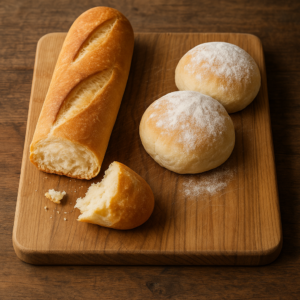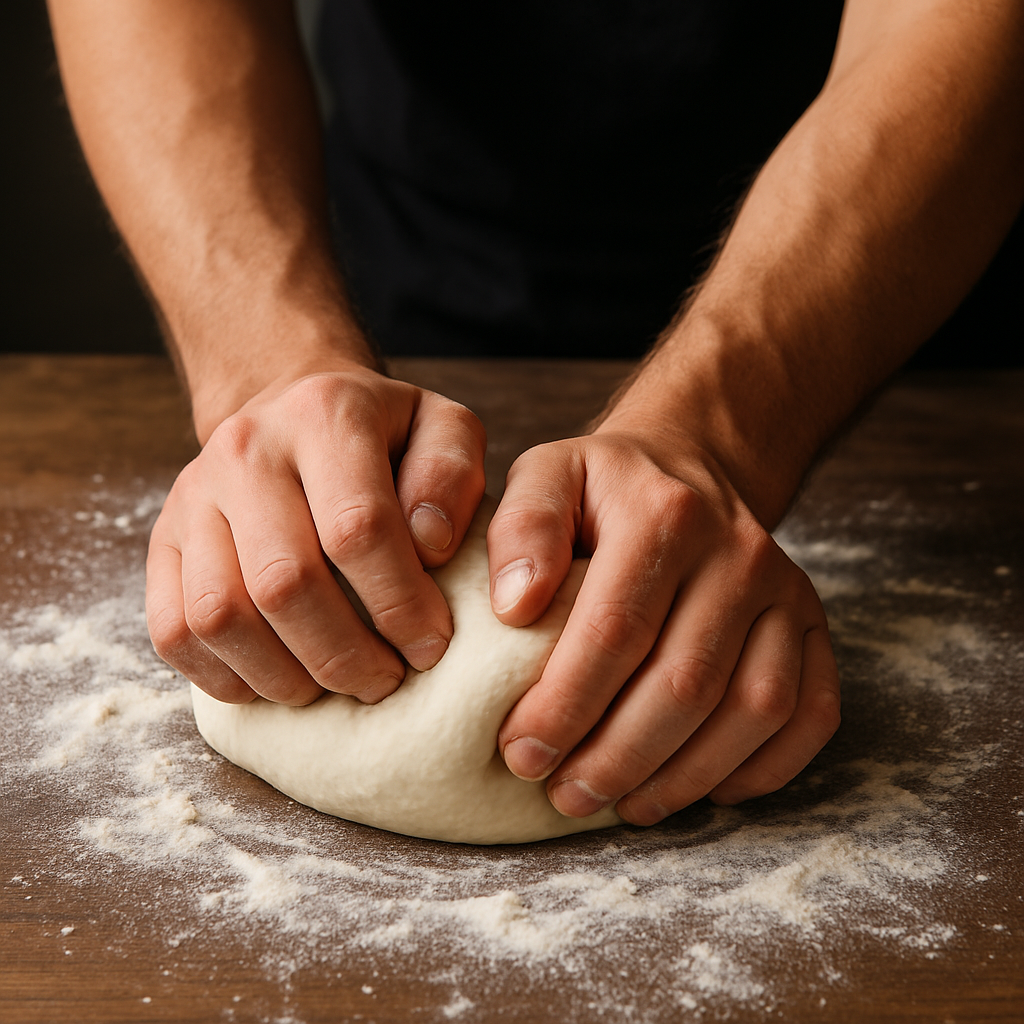Is There an Irishman Hiding in That Po’Boy?
How Waterford’s Blaa Might Have Snuck Into New Orleans French Bread Po’Boy

It’s a given that when you hear of a po’boy sandwich, it has its roots in New Orleans. But before the 1929 streetcar strike immortalized the name, one question lingers like steam rising from fresh bread:
What kind of bread were working-class New Orleanais eating before Leidenheimer’s famous loaf became legend?
World events were stirring long before po’boys hit the plate. In the mid-1800s, hunger and unrest drove waves of immigrants across the Atlantic. The Irish Famine devastated families and entire counties. Meanwhile, the German Revolution of 1848 sent political dissidents, craftsmen, and farmers fleeing a fractured future. Many landed in the Crescent City — with nothing but the clothes on their backs and recipes in their blood.
The Irish Channel neighborhood was born of these tides. Named for the thousands of Irish families who clustered there for support, the area offered affordable housing wedged between the Garden District’s grandeur and the protective rise of the Mississippi River levee. Magazine Street split the community like a ribbon of purpose — to one side, laborers from the docks, shipyards, streetcar lines, and canal crews; to the other, merchants, craftsmen, and immigrant-run shops, often shared by German and Irish neighbors alike.
And among the many things they shared? Bread.
Heat, Humidity, and the Art of Adaptation
New Orleans isn’t just famous for po’boys and brass bands — it’s infamous for its heat. Oppressive humidity begins creeping in as early as May and can linger all the way to Christmas Day. For European immigrants accustomed to misty Irish hills or the cool woodlands of Germany, Louisiana’s subtropical climate was a rude awakening.
The culinary traditions they brought with them — thick rye loaves, rich stews, dense baked goods — often proved too heavy for daily life in the sweltering South. Bodies craved lighter fare. Ovens sat unused for stretches of the year. And so, these resilient communities did what their ancestors had always done: they adapted.
Bread That Could Beat the Heat — and Feed the People
German baker George Leidenheimer is, to this very day, the name most synonymous with New Orleans French bread. But when he first set up shop, it wasn’t this airy crusted loaf he was known for — it was dark, dense German rye and pumpernickel. And in New Orleans, that didn’t fly.
The market wasn’t buying it.
The weather couldn’t stomach it.
And the laborers needed fuel, not fatigue.
So Leidenheimer did what every good baker — and every good immigrant — must do: he changed the recipe. He lightened the loaf. He responded to his community.
And in doing so, he became an unexpected hero of the 1929 streetcar labor strike. His soft white bread emerged as the perfect vehicle for cheap, hearty meals. It was light enough for the Southern heat but sturdy enough to hold fried potatoes, roast beef, or gravy-soaked meat scraps. It didn’t fall apart — it stood up to the workday.
Memory, Dressed with Gravy
Speaking of that soft, chewy, crusty bread… I can’t help but wander down po’boy memory lane.
I still remember my first French fries and gravy po’boy. It was messy. It was glorious. It was New Orleans in every bite.
But my favorite? Still the classic: Roast beef, dressed.
And if you know New Orleans, you know what dressed means — lettuce, tomato, and maybe a few slivers of onion, all tucked into that warm embrace of Leidenheimer bread and gravy.
It wasn’t just a sandwich.
It was a story, hot in your hands.
A story shaped by immigration, labor, resilience, and bread.
Sherlock’s Bread: A Loaf from Waterford
My partner and I spent years in New Orleans — not just living there, but soaking in every block, every recipe, every whispered story between the levee and Magazine Street. He was first-generation Irish-American, born right in the Irish Channel.
He didn’t carry a recipe book.
He was the recipe book.
His mother Myrtle’s recipes weren’t written down. They lived in motion. One of those sacred motions? A flour-dusted, crusty, soft-centered roll called Waterford Blaa.
It came with him.
It came with his name: Sherlock — from County Waterford.

Bloodlines, Breadlines, and a Whisper from Waterford
After our DNA test revealed that my father’s Y-DNA line traces back 5,000 years to the heart of Ireland, I started walking a new road — from Texas to Mobile Bay, through kitchens and cemeteries and census records. That’s when I found the Blaa again. Or maybe, it found me.
I read the recipe. Then I read it again. And I froze.
“Wait a minute… this is New Orleans French Bread.”
The flour. The dome-shaped top. The texture. The crumb. The dusting of flour.
Same process. Same story. Same hands, reaching across oceans.
Culinary Clues: Blaa vs. Po’Boy Bread
- Texture and Structure: Both feature soft, airy interiors with thin, crisp crusts.
- Minimal Ingredients: Just flour, water, yeast, and salt. No sugar, no fat.
- Holding Power: Made to cradle hearty fillings without collapse — from Irish stews to roast beef debris.
A Final Crumb
No, we may never find the perfect citation or archived recipe card that proves the Waterford Blaa became the po’boy loaf.
But bread remembers.
And sometimes, so does blood.
So the next time you bite into a po’boy — dressed, of course — take a moment to honor the possibility.
The hands that kneaded it.
The ovens that bore it.
And the women, like Myrtle, who kept sacred recipes alive by heart alone.
Because maybe, just maybe…
There’s an Irishman hiding in that po’boy after all.